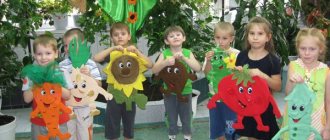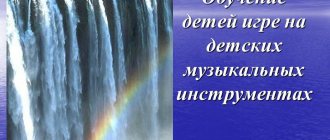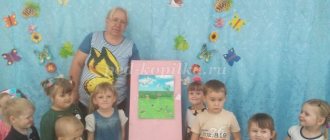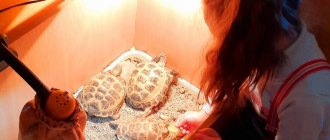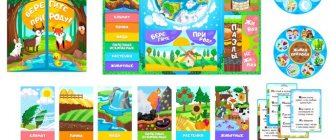Since ancient times, it was by objects of inanimate nature that people determined changes in the weather and its various phenomena: snow, rain, hurricane or blizzard.
Thanks to many years of observations of our ancestors over the world around us, today we have access to signs of inanimate nature about the weather, which help us predict accurate weather data for today, tomorrow, the next week or month.
Russian signs in the world of inanimate nature
Inanimate nature refers to the stars, sky, sun, earth and any natural phenomena, by observing which one can easily determine the weather for the near future.
Almost all folk signs about the weather in the world of inanimate nature were handed down to us by our ancestors who lived several centuries ago in Rus'.
Right now you can observe many interesting signs associated with natural phenomena:
- a blood-red dawn or sunrise warns of a decrease in air temperature and cloudy weather in the coming hours and days;
- a sharp change in wind strength (from hurricane to weak or vice versa) indicates a clear and cloudless day;
- non-blinding and slightly hazy rays of the sun mean the approach of a thunderstorm;
- the blue sky over the forest will please you with good news - warmth is near;
- good weather is also foreshadowed by high clouds ;
- the fog in the morning is light and spreads evenly - indicates warmth and lack of precipitation, and very thick fog warns of coolness and rain;
- frequent rains in the fall will continue into the spring, it will be just as wet;
- a dim, almost invisible moon in the night sky predicts rainy weather, and a bluish halo around it confirms this;
- snow that fell early in autumn - by early spring;
- exactly 40 days after the first snow, real winter will come;
- if the clouds are high , there is no need to worry, the weather will be good;
- two rainbows in the sky look impressive, but mean continuous rain.
Some signs in Russia have a scientific basis: “The thicker the shell of acorns, the harsher the winter” - proven by a scientist who described the relationship between shell hardening and winter frosts in the Farmer’s Almanac magazine.
Science also explains the increase in the thickness of onion and corn husks and the enlargement of pine cones before the upcoming cold weather, and much more.
What changes occur in wildlife in autumn?
Autumn is the period of transition from summer activity to the processes of winter stagnation. Autumn is characterized by the following changes in wildlife:
- yellowing and falling leaves;
- wilting of herbaceous plants;
- preparing animals for winter (collecting and storing supplies, growing fur);
- departure of migratory birds;
- disappearance of insects.
Let's look at these natural phenomena in more detail.
Yellowing and falling leaves
The first sign of autumn is the change in color of the leaves on the trees. This natural phenomenon is associated with biological changes that occur in most trees during the onset of the first cold weather.
Why do leaves on trees change color? As Georgy Graubin explains in his book “Why Leaves Fall in Autumn?”, the green color is given to them by a special substance - chlorophyll. With the onset of autumn, the sun shines less, the days become shorter, and plants receive less light.
Under such conditions, chlorophyll is destroyed and does not have time to be restored. The green color in the foliage decreases and yellow becomes noticeable. In autumn, the leaves can be yellow, red, or crimson. It depends on what coloring matter is in the leaf.
After the color changes in the last months of autumn, the leaves begin to fall from the trees. This has great physiological significance for them:
- plants get the opportunity to rest and prepare for hibernation;
- the risk of mechanical damage is reduced - without leaves, a lot of snow does not accumulate on the branches during snowfalls;
- Together with the leaves, the plants shed pests that lived on them in the summer.
Fallen Yellow Leaves: Pexels
Wilting grass
In autumn, herbs part with the above-ground part of the plant in order to save the more important parts - rhizome, tuber or bulb.
Over the summer, nutrients accumulate in the underground structural elements of grasses, which perform two important functions:
- do not allow the plant to die during the cold period;
- retain the ability to quickly revive the stem and leaves with the arrival of spring.
Some animals hibernate
Hibernation is a special state of plants and animals, when during periods of cold weather and lack of food, the activity and vital functions of the body decrease, the exchange of juices and the need for food decreases.
Who hibernates when autumn arrives? Here are several types:
- Some mammals (bear, hedgehog, badger, marmot), rodents (hamster, gopher). They hibernate at the end of autumn - at the beginning of winter, which is due to the lack of food supply for them.
- Cold-blooded animals (snakes, frogs), reptiles and amphibians. They "fall asleep" in late autumn because they cannot maintain the temperature necessary to survive.
- Insects - flies, mosquitoes, beetles, spiders. With the onset of cold weather, they hide in cozy crevices and appear dead. This is a protective reaction to a decrease in temperature. With the onset of spring they will come to life.
Animals stock up
Animals that do not hibernate for the winter are actively preparing for the cold. For this they:
- prepare food supplies;
- insulate homes;
- change color and grow thick and warm fur.
Squirrel Stocking Up for the Winter: Pexels
Bird migration
Migratory bird species prepare to fly to warmer climes from the beginning of autumn. Then their flight begins. As a rule, birds fly in flocks to the same wintering areas, and with the onset of spring they return to their native lands.
As Leonid Sokolov states in the book “Why Migratory Birds Return Home,” loyalty to their homeland was found in birds belonging to different groups, ranging from the largest and longest-lived flying birds (albatrosses, petrels, storks, swans) and ending with the smallest and short-lived passerines ( blackbirds, wrens, flycatchers, warblers, etc.).
Wintering birds do not fly anywhere and feed intensively in the autumn forests.
Predictions for the solar system
To make an accurate weather forecast based on observations, it is better to compare several signs of objects or inanimate natural phenomena with each other. For example, if the sun sets into bright scarlet clouds, it will get colder the next day. And if there is also dense fog in the morning, it’s as if no warmth is expected. The more a person knows and accepts, the more accurate the forecast will be.
Lunar secrets
Looking at the outlines of the mysterious night luminary, you can determine what the coming day and the entire next week will be like:
- pale moonlight in winter indicates snowstorms and frosty days;
- a month floating across a foggy sky warns of snowstorms and serious snowfalls;
- a brightly shining moon means a sunny day and a change in air temperature;
- the summer moon, with unclear outlines, floating in the fog, marks bad weather and a period of rain.
Sun
The sun is warmth, energy, the beginning of a new life. Magicians consider a solar eclipse, of all natural phenomena, to be the most favorable moment for communication with the other world, and ordinary people determine weather conditions by the largest and hottest star:
- shining at sunset predicts a gusty and very powerful wind for the coming day;
- surrounded by fog - warns of heavy rain;
- peeking out after the rain promises a rich harvest of mushrooms;
- a halo around - indicates rain in summer, and snowfall in winter;
- red sunset - marks the wind throughout the next day;
- rose earlier than before - there will be rain.
What the stars are talking about
The night sky, strewn with billions of stars, cannot but fascinate. But glances are turned to him not only in romantic moments or moments of sadness, but also to determine the weather. It was thanks to these celestial bodies that travelers and sailors could predict weather conditions in advance, avoiding storms and storms that bring death to all living things. But it’s not only useful for them to know star signs:
- bright shining stars predict frost in winter, and heat in summer;
- strongly twinkling stars predicted bad weather, but at the same time, flickering in the early morning among the clouds is definitely a thunderstorm, and emerald midday stars lead to cloudless, dry weather;
- if the size of the stars seems smaller - it could be rain (or snow in winter);
- winter multi-stardom promises cold weather, summer – good weather, rare stardom – bad weather at any time of the year;
- dark circles around stars or nebula indicate slushy weather, while red or white ones predict heat;
- the darkened stars of the Big Dipper and dim stars of the Milky Way also warn about rain (light ones indicate clear weather);
- starfall signifies windiness;
- October bright stars indicate improved weather;
- the stars seem distant in summer - for rain, and in winter - for thaw;
- the night sky is clear, but no stars are visible - bad weather.
The reliability of the data has been repeatedly confirmed by observers, so they do not lose their relevance, helping to make accurate weather forecasts.
Organization of cyclic observations with preschool children
Svetlana Kazmina
Organization of cyclic observations with preschool children
Environmental education for preschool begins with familiarization with the objects of the immediate environment that the child encounters every day. Most modern children, especially those living in large cities, rarely communicate with nature. You cannot study nature from pictures, films, books. But in any city or town you can find natural objects interesting to observe , one of which is birds.
Organization of cyclic observations with children of primary preschool age.
Goal: To enrich children's ideas with fascinating information about the life of birds; about the appearance, habits, living conditions of birds; help you understand and love birds.
Objectives: Enrich vocabulary, develop coherent speech: learn to talk coherently about observed phenomena , compose creative stories, use speech as evidence; learn to compare, analyze, establish simple cause-and-effect relationships; cultivate a humane attitude towards living things.
Observation 1 . Getting to know the bird.
Goal: To introduce children to a bird that lives in a corner of nature and flies to the site, tell it its name, give it a nickname. Pay attention to the fact that she is beautiful, cheerful, briskly jumping and chirping.
Observation 2 . What does the bird eat?
Purpose: To show children that the bird is fed with a grain mixture (small grains of different colors, grated carrots, cottage cheese crumbs, eggs, and water is given. The food is placed in a feeder, water is poured into a drinking bowl. The feeder is hung on the site.
Observation 3 . The bird is fed every day.
Goal: Within a few (five)
days to demonstrate to children that the bird is alive, it must be fed every day in the morning.
At the site, they pour food into the feeder and watch the arriving birds.
Observation 4 . What does a bird do in a cage (task for children)
.
Goal: Encourage preschoolers to make independent observations , teach them to notice the different actions of a bird, and name them with words. On the site, observe the arriving sparrows, tits, and their habits.
Observation 5 . Who cares for the bird?
Purpose: to draw attention to the fact that the bird cannot feed itself, the teacher and children take care of it, give food, pour clean water, and clean the cage. The bird feels good in a clean cage with food and water. On the property and in the park, if you don’t put food in the feeder, the bird looks for it itself and drinks from the puddle.
Observation 6 . What does a bird have?
Purpose: To clarify the features of the bird’s appearance. She has a head, torso, legs, tail, wings. There are eyes on the head, a beak with which it pecks food and drinks water. Using its legs, it jumps around the cage, sits on a perch, and flaps its wings. On the site observe how the bird flies from branch to branch, walks, and jumps.
Observation 7 . How birds bathe.
Purpose: to show children how a bird can bathe in water if it is given a bathing suit in its cage. She climbs into the water with her feet, crouches, and beats her wings. She likes to swim. On the site watch sparrows and pigeons bathe in puddles.
Organization of cyclic observations with children of middle preschool age.
Observation 1 . Getting to know the bird.
Goal: To introduce children to a bird that will live in a corner of nature. Find out how it differs from the one that the children observed last year (size, color)
. Establish similarities in the appearance of birds - there is a head, a body, a tail, wings, legs, on the head there are eyes, a beak.
Observation 2 . In what conditions does the bird live?
Purpose: To acquaint children with the conditions of keeping the bird: it lives in a spacious cage, in which there are perches, sand and small stones, a feeder with food and a drinking bowl with water. Show children the need for such conditions; in a large cage, a bird can fly and flutter: it sits on perches, jumps on them, pecks at sand, drinks water, eats food, and bathes in water.
Observation 3 . Who cares for the bird and how.
Goal: to show preschoolers that the life of a bird depends on humans (teacher and children)
. In order for the bird to feel good, healthy and cheerful, it must be constantly looked after: clean the cage, sift the sand, wash the feeders, and do not leave the bird without food and water. Everything must be done carefully so as not to frighten her.
All birds are shy and cautious.
Observation 4 . How birds behave after cleaning. observation task )
Goal: To teach preschoolers to take the initiative in observations , to teach them to notice the peculiarities of a bird’s behavior, and to associate them with good conditions that are created by the work of the people caring for it. Encourage children to speak about what they see.
Observation 5 . How does the bird sing? (task for children)
Goal: To teach children to independently listen to the sounds made by a bird, listen to singing, and feel its beauty. Explain - the singing of a bird is its joyful state, which occurs with good care. On the site, listen to the sounds made by birds.
Observation 6 . How much does the bird have?
Goal: Clarify with children their ideas about her appearance. She has one head, one tail and one beak, two eyes, many feathers that cover the body except the beak and legs. The feathers are of different colors, they are soft and light.
Observation 7 . How a bird bathes (task for children)
.
Goal: Encourage children to independently observe and speak about what they see. Learn to notice the bird's actions during and after bathing. Pay attention to how, sitting on a perch, she arranges feathers with her beak, dries them, and preens herself.
Observations 8 . Why does a bird need legs and wings?
Goal: Clarify with children the functions of the bird’s locomotion organs . With the help of her legs she jumps around the cage, sits on a perch, scratches her body, flutters with the help of her wings, flies from place to place, and bathes in the water.
Organization of cyclic observations with children of senior preschool age.
Observation 1 . Meeting a new bird.
Goal: To identify the distinctive features of the new bird in its external structure in comparison with the bird of the previous year, to find similarities.
Observation 2 . Poultry living conditions.
Goal: Clarify with children what is vitally important for a bird, what objects constitute its living conditions (cage, perches, sand, food, water)
.Show the meaning of each of the attributes: the bird lives in a cage (this is its home, it rests on perches, jumps on them, eats food, drinks water, pecks sand
(with its help the bird digests food)
.
For a bird to be healthy and cheerful, the conditions in which it lives must be good: a large cage, several perches, clean sand and clean water, a variety of food: grain mixture, soft food (cottage cheese, eggs, carrots, greens (bunches of herbs, mineral supplements) (coal, chalk, shell)
Observation 3 . The work of those on duty is taking care of the birds.
Goal: Show preschoolers that the work of those on duty in a corner of nature creates all the necessary conditions for birds. Demonstrate the sequence of work actions, their high-quality execution, and careful behavior near the cage.
Introduce preschoolers that people take care of birds living in the wild (birdhouses are hung in the spring, there are “duck farms”
).
Observation 4 . Which greens are best?
Goal: Continue to teach children to independently observe the behavior of birds : offer to find out how it will react to boxes with green oats and Tradescantia cuttings placed in a cage, which of the greens will peck, which will peck first.
Observation 5 . What kind of legs does a bird have?
Purpose: To clarify the structural features of the bird’s legs, their adaptive significance: the legs are thin, covered with feathers at the top, without feathers at the bottom, covered with scales. There are 4 toes on the feet, they are widely spaced - 3 forward, one back (in a parrot - two forward, two back, so the bird stands steadily. The toes have thin, curved, sharp claws. The toes can bend, with which it clasps thick and thin branches.
With the help of claws, the bird is easily held on branches and perches.
Observation 6 . Does the bird have a neck?
Purpose: To show children that the short, almost imperceptible neck of a bird can stretch out, and then it is clearly visible. With the help of their necks, birds easily turn their heads in different directions and notice everything.
Observation 7 . Can the bird hear?
Goal: Find out with the children how the bird reacts to sounds, tell them that it hears well, that its ears are located on the sides of its head under the feathers, they are not visible.
The bird turns its head to the sound, becomes silent, stops eating, and listens.
She is afraid of unexpected loud sounds.
Observation 8. When the bird sings:
Goal: Offer to find out on your own when the bird sings (before eating, bathing)
or after, in cloudy or sunny weather, what sounds does it make, is it pleasant to listen to.
On the site, in the park, offer to listen to the trills of birds, recognize them by their voices, listen to the cries of birds flying away. Offer to listen to the trills of birds on a recording.
Observation 9 . How a bird rests and sleeps.
Purpose: Show children that the bird is resting, sitting on a perch, tightly clasping it with your fingers. At the same time, she fluffs up the feathers on her body and closes her eyes. When falling asleep, the bird hides its head under its wing and holds tightly to the perch in its sleep. She falls asleep at nightfall and wakes up at dawn.
Observation 10 . Decorative birds, birds of prey, birds of hot countries...
Goal: To introduce preschoolers to the variety of bird species, the features of their appearance, habits, and living conditions.
Observation 11 . Migratory, wintering, migratory birds.
Goal: To expand children’s knowledge and ideas about the features of the appearance of birds, life manifestations, habits of birds, adaptation to their environment.
Signs of inanimate nature
The phenomena of inanimate nature are monitored in different seasons of the year, and the signs, accordingly, differ: if January icicles promise high yields, then April ones, with emptiness inside, do the opposite. It is also interesting that in winter you can predict summer weather, and in autumn - spring weather, that is, you can determine weather conditions several months in advance.
Spring
Observations of inanimate nature in the spring allow you to orient yourself and correctly determine the weather:
- Dry, almost rainless March promises good harvests;
- a rainy first month of spring and icicles with an empty middle foretell poor harvests;
- lightning without thunder marks a hot and dry summer;
- the more rain there is in April, the more mushrooms are expected in the forests;
- The first April thunderstorm will delight those waiting for warmth - a hot summer and at the same time a rich harvest of nuts.
Intuition can deceive, but signs about the weather in inanimate nature never do. The ancestors understood this and many use their knowledge today.
Summer
According to folk superstitions, the amount of morning fog in August can be used to determine how heavy the winter snowfalls will be. Observing the inanimate nature of the world in summer you can learn a lot of interesting things:
- high yields of cereal crops predict a frosty and snowy winter (we stock up on bread);
- a rainy summer turning into a warm, dry autumn indicates a long winter;
- warm summer nights will bring good honey harvests;
- the absence of dew on a summer night predicts daytime rain;
- the fog spreading over the water marks a hot day;
- a double or even triple rainbow indicates a repetition of previous precipitation.
Thanks to the signs, you can prepare for a harsh and long winter. Or rainy autumn.
Autumn
Autumn is loved for its variety of colors, especially if the season is warm, however, bright colors warn of severe winter frosts. There are several more autumn signs:
- thunder from a clear autumn sky predicts a sunny and very warm autumn;
- trees that do not shed their leaves until December warn of a long and cold winter;
- late-flowering rowan indicates a long autumn season, and if there are unusually many flowers on the rowan, rain will prevail (with a small number of flowers, precipitation is minimal);
- It is not difficult to tolerate excessive autumn dampness, because this will lead to an early spring, just like the first snow that fell in early October.
Taking a closer look at the world around us is not just interesting, but very educational. Even the smoke coming out of a chimney in winter can tell you what the weather will be like the next day.
Winter
During the winter months, people determine the weather by the following criteria:
- smoke rising in a column high into the sky from chimneys indicates a clear future day, and if the smoke spreads to the ground - to bad weather;
- don’t let lightning scare you in winter - they warn of heavy snowfalls;
- a gloomy day gives way to a clear evening - frost is approaching;
- a blizzard is predicted by trees standing in frost in the morning;
No meteorologist can predict the weather with such accuracy as inanimate and living nature. It may not be possible to immediately determine, for example, whether there will be frosts today or not. But if you follow nature and write down all your observations, after a while, without special training anywhere, you can become a good forecaster and even record your own signs.
The importance of observations of animals and plants in the environmental education of preschool children
Definition 1
Environmental education is activities aimed at developing environmental awareness, including skills of interaction with the natural environment, as well as respect for the natural world and its operating characteristics.
Environmental education is not a separate process. It is closely related to the development of environmental responsibility in the child, the formation of the foundations of creative thinking, knowledge and beliefs in the field of ecology.
Ecological awareness and a culture of behavior in the natural environment must be formed in a child from preschool age. If they become established as personality traits, they will become guidelines for the social behavior of an adult.
Are you an expert in this subject area? We invite you to become the author of the Directory Working Conditions
Ecological awareness is important in the life of a preschooler. It manifests itself in the following:
- Showing the child’s interest in the natural world and the laws of its functioning.
- Consideration of nature as an aesthetic environment, aesthetic perfection. On this basis, the child’s aesthetic ideas are formed, the aesthetic perception of the world, the sense of beauty, etc. develop.
- Obtaining environmental knowledge that allows the child to consciously treat nature and not harm it.
- Development of a moral attitude towards the natural environment. A sense of duty and responsibility to nature and its inhabitants is formed, and good nature, compassion, and a conscious need to help “lesser brothers” are developed.
- Ecological consciousness forms the skills of anticipating the consequences of performing a particular action in nature.
Environmental education of preschool children is based on the use of the observation method. This method promotes a better perception of nature, its objects and processes. Vivid ideas are laid down in the mind of a preschooler as images that emerge in specific circumstances.
Finished works on a similar topic
Course work The role of cycles of observations of animals and plants in the environmental education of preschool children 440 ₽ Abstract The role of cycles of observations of animals and plants in the environmental education of preschoolers 240 ₽ Test work The role of cycles of observations of animals and plants in the environmental education of preschoolers 250 ₽
Receive completed work or specialist advice on your educational project Find out the cost
The use of this method has the following significance in the ecological development of a preschooler:
- Observation is relevant to use in the cognitive process of preschoolers, since it corresponds to the age stage of development of their mental processes. Information is best absorbed when actually seeing it.
- Observation develops concentration and increases the mental activity of a preschooler.
- Observation is a fascinating method of getting to know nature, so it motivates further study of its structure and processes.
- Observations of nature develop an understanding of its processes, form the skills of seeing nature and the fundamentals of its structure.
- Observation is the basis for various types of activities aimed at studying and transforming nature, activating labor skills in the natural environment.
- Observations of natural processes help in the development of speech in preschool children. The teacher comments on what they see and helps children correctly name natural objects and processes that preschoolers observe.
